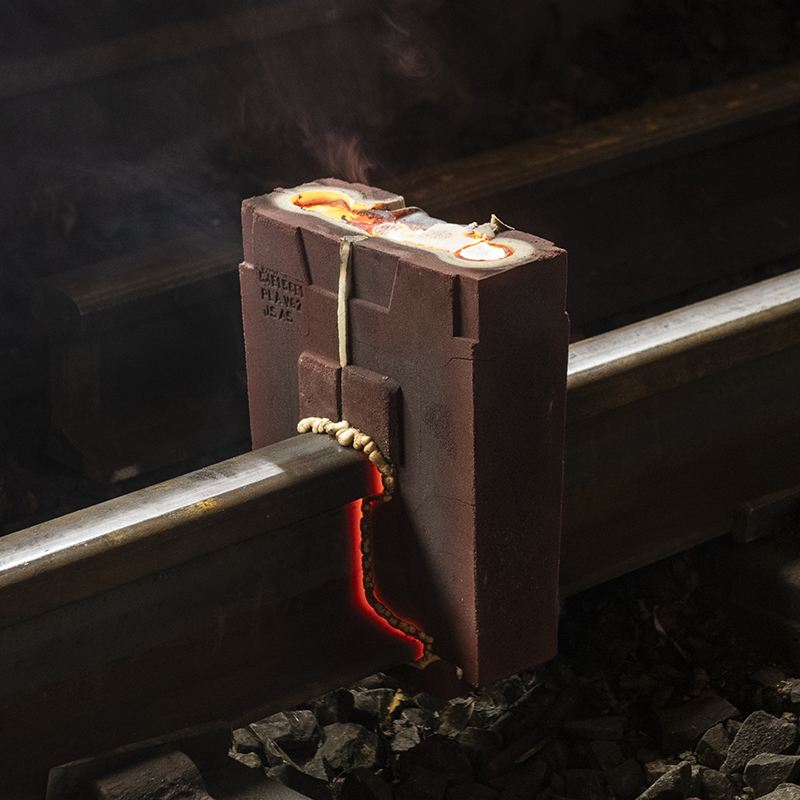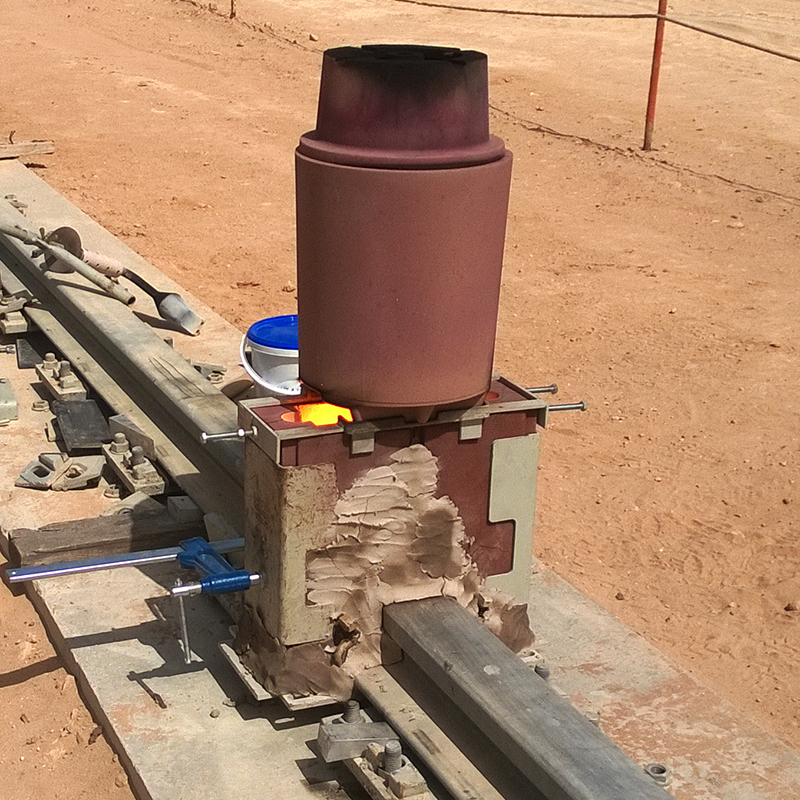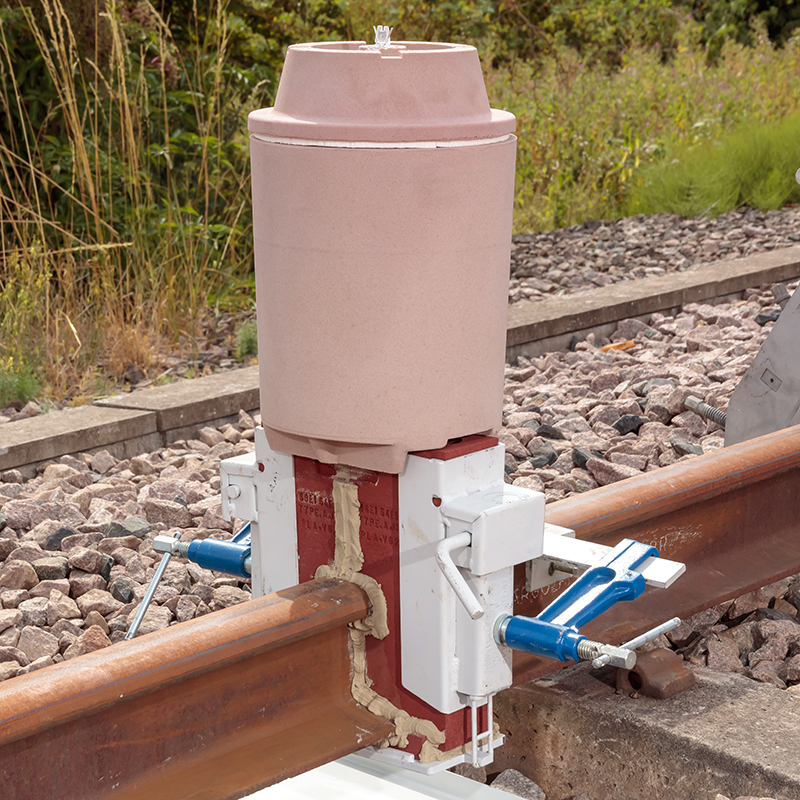Startwel® Ignition System product overview
The Startwel® Ignition System is a new, easy way for welders to ignite the weld charge to initiate the pour process of the Pandrol aluminothermic weld. It has been developed and patented by Pandrol to replace the traditional ‘sparkler’ igniter design.
- The ignition system is engineered to fit precisely into the round opening in the lid of the Pandrol crucible.
- Once the crucible is prepped and ready to pour, Startwel® can be placed in the lid and deployed safely by removing the metal clip grounding the prongs.
- On ignition, a drop of molten metal falls inside the crucible and causes combustion of the aluminothermic charge.
Downloads
Benefits of the Startwel® Ignition System
Reliable
The Startwel® Ignition System guarantees constant and reliable ignition.
Precise consistency
Because the ignition point is always in the same place, welds are consistently precise.
Safety
Startwel® improves aluminothermic welding safety for track technicians.
Compact design
It is lightweight and compact for technicians to carry on site and is easy and comfortable to use.
Safe for transportation
Its non-hazardous classification for transport means that it is safe for standard shipping.
Technical features of Startwel® Ignition System
Crucible compatibility
Startwel® works with both the Pandrol One-Shot crucible and disposable crucible.
Designed for ease of activation
The system is activated by touching the prongs on the starter handle with those on the starter, initiating a small electrical charge.
Consistent ignition point
Once activated, the Startwel® Ignition System thimble ignites and drops a small amount of liquid charge onto the top of the weld charge inside the crucible, safely and consistently initiating the pour process.
Long-lasting battery
The system uses a reliable lithium-ion battery. Over 100 starters can be ignited on one battery charge.
Ergonomic design
The Startwel® handle has been designed for efficiency and comfort. The system is packed in a compact and lightweight suitcase.
Non-hazardous classification
Startwel® cannot be activated until the pin is removed. As a result, it has a non-hazardous classification.
Related products

Tested and approved against the European Standard EN 14730-1 Norm, the PLA Evo delivers improved metallurgical and mechanical behaviour, to optimise quality, lengthen the life of the weld and save time for the welder.
PLA Evo

The HFP 36V is battery powered and fully automated for easier, more reliable operation: the ignition, timing and stop require no manual interference or flame adjustment.
High Flow Preheater 36V

AutoSeal® moulds are Pandrol’s newest aluminothermic welding innovation that streamlines the welding process.
i+seal moulds (formerly AutoSeal®)

HWR is suitable for repairing railhead defects between 25mm and 90mm wide and 25mm deep (depending on the rail profile), it can be used on both the parent rail and on electric flash butt welds, which often suffer from squats. It is also suitable for transversal defects, shelling and corner gauge. The aluminothermic weld process is carried out using specially designed moulds.
Head Wash Repair Rail Welding

Beyond offering welding processes for all standard rail profiles, we also collaborate with customers to engineer bespoke solutions for special rail types that are less commonly used, such as the special rail grades used on metro lines including rubber-tyred rail, guide bar rail, conductor rail, and rack rail. We can offer portions, moulds and crucibles designed to your exact specification.
Special Rail Welding

The process involves casting molten steel (produced through the reaction of iron oxide and aluminium) at a temperature exceeding 3,500 ˚F (1,950 °C) into refractory moulds designed to the rail specification.
Grooved Rail Welding

This flat-bottomed rail is typically larger and designed to continuously support high volumes of weight.
Crane Rail Welding

Our vignole rail welding processes equip the user to perform new welds as well as wide-gap and head-wash repairs.
Vignole Rail Welding

Pandrol Connect consists of three modules: a mobile version for welders to record on-site data and for welding controllers to review data, an online monitoring app to review weld information from the office, and an online administration tool to apply settings to local standards.

